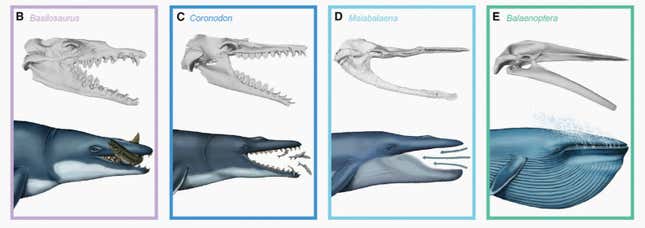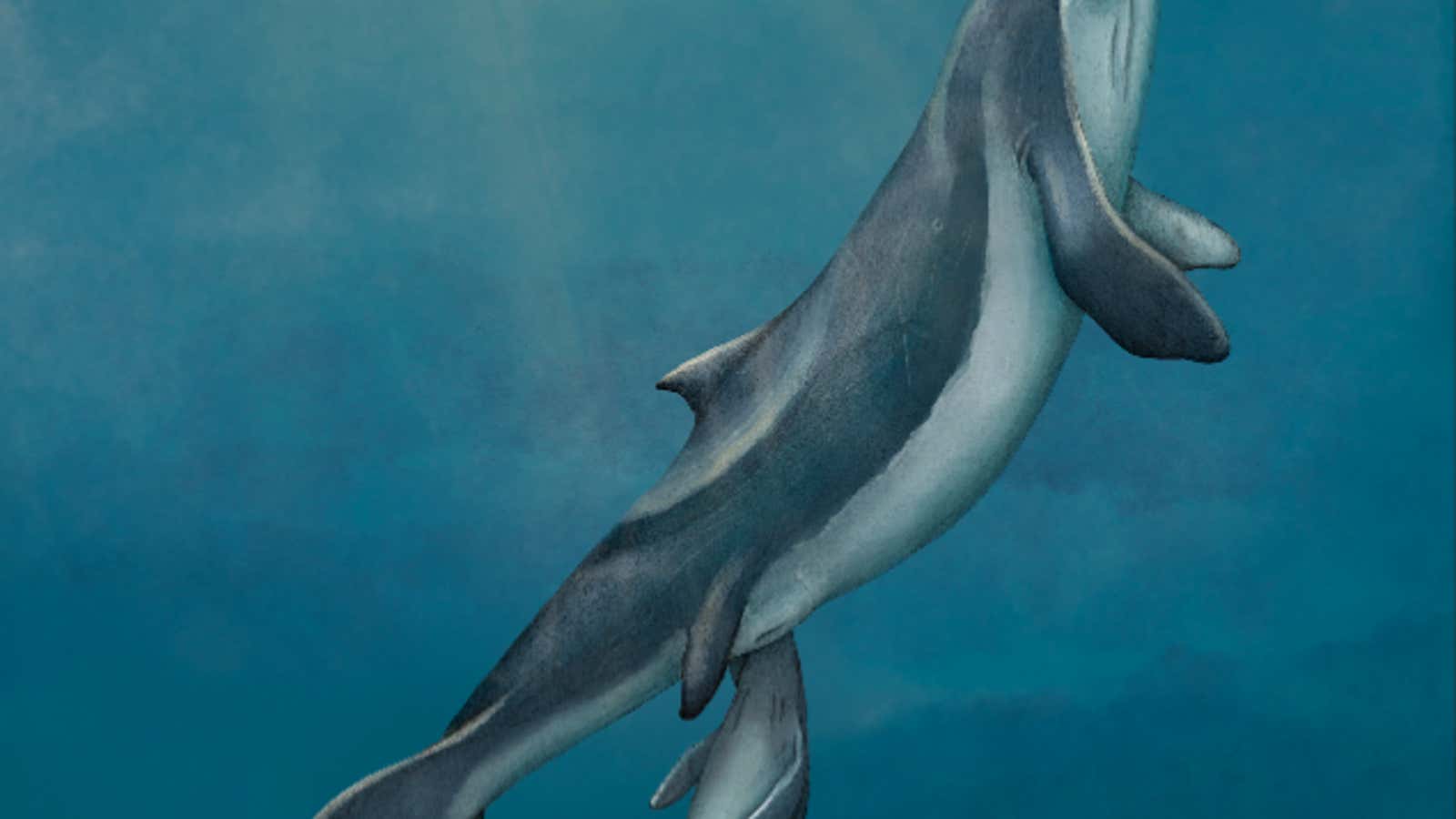Whales some 33 million years ago were not polite diners. They lacked teeth, so like powerful, prehistoric vacuums, they sucked down entire fish and squid, swallowing them whole.
The image of a gummy, toothless whale disrupts current evolutionary theories that the teeth ancient whales had for chomping down on meals evolved into baleen—the straw-like, keratin structures that filter tiny prey, like krill, from ocean water. However, newly documented remains from a species of ancient whale suggest whales first lost all their teeth entirely, and then evolved to have baleen. Researchers led by a team at George Mason University in Virginia described their findings in a paper published today (Nov. 29) in the journal Current Biology.
The researchers examined the remains of an ancient whale discovered in Oregon in 1977 by an amateur fossil collector, which for decades were stored away in a warehouse in Maryland. To date, all we’ve known about this whale was that it lived about 33 million years ago; scientists called it Maiabalaena, or “mother whale.”
When the team from George Mason finally got around to examining the bones, they were surprised to find a jaw and throat structure more consistent with sucking, rather than biting or chewing. Because Maiabalaena lived in between toothed whales, which date back to 55 million years ago, and the emergence of baleen whales, which originated 25 million years ago, the team believes it represents an intermediate evolutionary step in whale history.

Maibalaena evolved to be toothless because whales living in that time didn’t need teeth to live long enough to reproduce, says Carlos Peredo, a graduate student studying paleontology and lead author of the paper.
Ancestors to Maibalaena had full sets of teeth for catching and chewing up prey. At some point, though, they started eating smaller and smaller animals that needed less chewing—meaning that whales with teeth were no more likely to reproduce than animals without. Eventually, though, teeth may have impeded suction feeding, or perhaps whales without teeth needed less food than toothed whales during maturation, making them more likely to survive. As more of these toothless survivors reproduced, whales lost their teeth entirely.
Peredo postulates that baleen evolved to solve a problem that suction feeders faced: taking in too much salt water during meals. Baleen strains out krill and other kinds of small prey to be swallowed, while allowing the whale to push out any excess water.
This work shows that evolution doesn’t necessarily follow a straight path, but instead progresses to favor whatever animals need to live long enough to reproduce in their environment. Inevitably, modern baleen whales will have to evolve again to keep up with their oceanic homes, which are changing rapidly due to warming waters resulting from climate change. Marine biologists still aren’t sure how these changes will affect their food sources or physiology. Although evolution can happen within 100 generations (a blink of an eye, in biological terms), some baleen whales live for over a century. With lifespans that long, it’s unclear if they will be able to evolve quickly enough to keep up with their changing environment.
